
Amanda Vestergaard writes about a pared-down but nonetheless enjoyable adventure in Italy and Slovenia, with some hints and tips for following in her footsteps.
"OK hear me out… what if… we leave the rope at home?" Saying this, I could hardly believe the words coming out of my mouth. It's mid-March, and my friend Fliss and I are on the phone discussing plans for our upcoming one-month trip to Europe. For budgetary reasons, we had already decided not to rent a car. As the blueprint for our trip evolved from a simple one-stop climbing venture to include hitch-hiking and trekking across multiple borders, it quickly became apparent that we would struggle to carry climbing gear on top of all the other essentials… the rack and rope had to go.
This is how we ended up in some of Europe's most revered climbing destinations with only trainers, harnesses and via ferrata kits to get us off the ground. What follows is a detailed guide to our simple (if slightly unusual) galavant around some of southeastern Europe's great mountain destinations, including Riva del Garda, Triglav National Park, and Hvar island.
Via Ferrata in Riva del Garda
Riva del Garda is a town situated on the northern tip of Lake Garda, surrounded by spectacular mountains of the southern Dolomites. Located a quick 5 minute bus journey from the world-renowned climbing destination of Arco, the town is host to myriad adventure tourism opportunities, from climbing and mountain biking in the surrounding mountains to sailing and windsurfing on Lake Garda.
Getting here:
After arriving in Venice via a direct flight from the UK, Fliss and I made the three-hour journey to Riva del Garda by train, via Verona, to Rovereto. From there, Riva del Garda is 40 minutes away by bus; a scenic journey that meanders through valleys and mountain passes. We got off at Riva del Garda bus station, which is located close to several large supermarkets where you can stock up on food before heading into the hills.
Accommodation:
The mountains surrounding Riva del Garda are dotted with several mountain huts, many of which have 'winter rooms' where mountain recreationalists may stay for free during the off-season. To locate specific huts, and to see whether or not they have winter rooms, you can explore this page. The site also contains information concerning when the huts are open, how much it costs to stay during summer, and potential snow levels surrounding the hut throughout the year. If you go for this option, please be respectful of the huts and their surroundings. In general, aim to leave the winter rooms in better condition than you found them.
During our time in Riva del Garda, Fliss and I stayed in Rifugio Santa Barbara. This hut, owned by the Italian Alpine Club (CAI), sits high above the town, on the well-signed path up to the Chapel Santa Barbara. The hut's winter room resembles a bothy, with a wood-fired stove, tables and benches. Unlike most bothies, however, the hut has large windows from which you get spectacular views of the town and lake below. The hut served us well in three days of torrential downpour and, when the sun reappeared, offered the perfect place of departure for several of the nearby via ferrata lines.
Local Via Ferratas:
Riva del Garda is host to an abundance of via ferrata lines, most of which are detailed in the second volume of the Cicerone guide to via ferratas in the Italian Dolomites. This region is known for staying below the snow-line for most of the year, so is perfect for spring, when other parts of the region are still under snow. Fliss and I ended up exploring four separate lines in the area, all accessible on foot from Rifugio Santa Barbara.
1- Routes 404A and 405
Departing directly from the rifugio, Fliss and I used these as access routes to the lines on Cima Capi. This is more of a scramble than a climb, and gear is not always required. The route does however have some very exposed sections, where clipping into wires is great for extra security. We did get some rockfall en route, so helmets are definitely a must, even if you are choosing not to make use of other gear.
2. Sentiero Attrezzato Mario Foletti
Most people use this route to descend from Cima Capi, heading back down to the village of Biaseca. However, as we were approaching from the opposite side, we used this route to access the start of the line leading up to the Cima Capi summit. The route runs through WW1 trenches, and passes another mountain hut, which stays open to serve drinks throughout Spring.
3. Sentiero Attrezzata Fausto Susatti
This is the most popular of the local lines and takes you to the summit of Cima Capi. The route offers easy but exposed scrambling, with amazing views overlooking Lake Garda. From the summit, you can retrace routes 405 and 404A back to the rifugio, making these 3 lines perfect to do in combination for a circular day out.
4. Ferrata del Centenario SAT
This line starts just behind Rifugio Santa Barbara, and offers 1200 metres of ascent via a series of vertical ladders. Unfortunately this route was closed for repairs during our visit, but it looks impressive nonetheless.
Other things to do:
Being a classic tourist destination, Riva del Garda has lots of alternate activities to offer, whether to escape the rain, or to just have a bit of a rest.
An obvious place to spend some time is on the shores of Lake Garda, which is perfect for a swim, or even for a surf or a kayak if you are willing to splash money on kit rental.
It is also well worth exploring the many leftover relics from WW1, including both trenches and bunkers, which are scattered throughout the local mountain sides. These are great to explore on a wet weather day, especially if you are a bit of a history nerd like me.
Triglav National Park and the Juliana Trail
Officially established in 1981, Slovenia's only national park is located in the north-western part of the country and is home to the impressive mountain ranges of the Julian Alps. The area is defined by thrilling peaks, tranquil valleys, and beautiful rivers such as the bright blue river Soča.
Getting there:
From Riva del Garda, Fliss and I retraced our steps back to Verona, where a night train goes directly to Tarvisio Boscoverde, located on the northernmost corner of the Italian-Slovenian border. If everything goes to plan, this is a quick and easy journey with great views along the way.
Once you reach Tarvisio Boscoverde however, transport options across the border to Slovenia become few and far-between and often involve hour-long detours. This is why Fliss and I opted for hitch-hiking as our preferred way of travelling across the border to Bovec, a mecca for hiking and water sports.
Tourists, skiers and other outdoor enthusiasts often drive this 30 minute route, and with a bit of patience, Fliss and I found that hitching was faster and cheaper than public transport. It also had the added advantage of putting us in contact with lots of lovely people who were full of great recommendations for things to do and provided us with much-needed help on our terrible Slovenian pronunciation.
Accommodation:
As in Italy, mountain huts are available throughout the Julian Alps, however these are often located above the snowline until later in the season. After speaking to some locals about wild camping, we decided to do this instead, as it gave us more flexibility for where to go.
It should however be noted that wild camping is not generally allowed in Slovenia. One way to get around this is to camp on private land, with the permission of the landowner of course. In Bovec there are many campsites, and although they can be quite expensive, it is nice to stay one or two nights to shower and wash clothes. Fliss and I stayed at Kamp Liza, located right next to the Soča river.
The Juliana Trail
There are a number of trails you can choose to follow in the area, all of varying length and seriousness. Some go hut to hut, others go village to village. Having been opened in 2019, the Juliana Trail is the newest of these trails, taking you on a 270km long circular route around the Julian Alps in 16 separate stages. While the trail does not pass over any of the peaks, it does lead a lovely meandering path through the many alpine valleys and mountain passes of the Triglav national park. The trail passes through several villages on the way where you can restock food supplies and the water in the rivers en route are safe for filling up water bottles along the way.
Fliss and I walked Stage 13 of the trail, which is 21 km long, and took us from Bovec further down south to the town of Kobarid. This stage of the trail runs along the Soča river and we walked through forests and gorges, passing through many small local villages on the way. The forest was teaming with wildlife and sprouting flowers and we were lucky enough to spot several frogs and newts spawning in the shallows, as well as a golden eagle soaring high above the canopies. About halfway along, we stopped for a secluded swim in the icy blue river, a great way to reinvigorate our tired feet for the latter part of the journey.
Other things to do:
Triglav National Park is every outdoor enthusiast's dream, especially when it comes to watersports. The Soča river offers stunning paddling tours and white water kayaking, as well as canyoning in its many gorges. The area is also full of places to go for swims in amazing turquoise pools. Nadiža Gorge, for example, is well worth a visit. Although Fliss and I did not get a chance to experience the via ferrata lines in this area due to snow cover, these do exist, with the Mangart Loop being one of the most popular lines.
Exploring the Limestone Cliffs on Hvar Island
Hvar is one of several islands located just off of the Croatian mainland, one hour from Split via ferry. The island has seen lots of new climbing development over recent years, and has quickly become a popular sport climbing destination, attracting climbers from all over Europe. Climbing mostly takes place on the limestone sea cliffs on the south side of the island, near the small village of Sveta Nedilja.
Getting there:
The easiest way to get to Sveta Nedilja is to hop on the ferry to Stari Grad from Split (which itself has many direct transport links from all over eastern Europe; Fliss and I happened to get there via bus from Rijeka). From Stari Grad, we then hitched a lift along the main road towards Hvar town, and got dropped off just before the turn off, where a bend in the road meets a small dirt road signed to Sveti Nikola. From here, it is a 7km walk along a spectacular mountain road cut into the hills above sheer cliffs and vineyards, with amazing views over the Adriatic sea.
Accommodation:
As is generally the rule in this part of Europe, wild camping is illegal on Hvar island. After asking some locals for permission, Fliss and I managed to pitch our tent on private land, in a patch of dense pine forest. This said, be aware not to pitch on someone's land without asking, as the island is covered in vineyards, which are diligently tended to.
Campsites are also available, most notably Cliffbase campsite, which is owned by the company behind most of the established climbing on Hvar. There is a small supermarket in the village, but opening times are sporadic at best. It should also be noted that restaurants and cafés are mostly closed in the off season, making it difficult to fill up water. One way to overcome this is to bring a remarkably outgoing friend (aka Fliss), who has no issue knocking on doors and asking to fill up a Nalgene or two from people's garden taps.
Via Ferratas:
On this side of the island, there are three separate via ferrata lines, all established in 2019 by the owner of the local climbing company Cliffbase. The lines Via Mirko and Via Avalon start just around the corner from each other, on the cliffs towering above the Sveta Nedilja village.
Of these, Via Mirko has become the classic line, boasting 80 metres of ascent up a sheer face via steel staples. Via Avalon offers a less exposed route up the corner just left of the face. Both of these lines lead up to an infamous 30-metre long wire bridge, hanging 80 metres above the ground. Being visible from the village below, this spectacular bridge is definitely the star of the show.
At this point, the founder of Cliffbase has set up a donation box, with a suggested donation of 50 kuna (about 6 pounds) for maintenance of the lines, and the possibility of further expanding climbing on the island.
From here, the last of the three lines, Via Barbara, traces a meandering path to the top of the island's highest peak, Sveti Nikola, giving amazing 360 views of the entire island. This line is easy and relatively unexposed, but does contain sections that are not protected by wires. The scramble is marked by yellow painted markers. Once finished, the descent back to the village is easy and well sign-posted. On your way down, be sure to stop to admire the Sveta Nedilja cave monastery, which was built into one of many local caves in the 15th century.
Other things to do:
Being a classic holiday destination, Hvar Island proved to be the perfect place for Fliss and I to relax and soak up some final rays of sunshine before returning to Scotland. The island has hundreds of hidden beaches and lagoons with clear blue water to swim in, as well as many great coastal walks along the top of cliffs that dramatically plummet into the Adriatic.
Being home to some of Croatia's oldest Greek settlements, it is also well worth visiting the port town of Stari Grad, whose beautiful streets and architecture has been classed as a UNESCO world heritage site.
Travelling Without a Car: the general logistics
We love public transport for its sustainability, simplicity, and ability to put us in touch with local people. But let's be honest, the system has its flaws, especially when trying to navigate remote mountain regions, where transport links can be sparse and tricky to navigate. After a month of sampling bus journeys, train rides, ferry crossings and hitched lifts, Fliss and I picked up a few key things to keep in mind for a smoother journey.
Leave a bit of slack in the system
While journey planner apps such as Rome2Rio and Google Maps may suggest what appears to be the most direct journeys with the least wait time, it often pays off to opt for an option that leaves you more time between connecting trains and buses. This gives you time to find the correct platform or bus stop, and creates a buffer in case prior connections end up being delayed.
Carry cash, including smaller notes and coins
In most of the areas we travelled, buses only took cash and often did not have change for larger bank notes. Sometimes, buses also charge a small fee for storing luggage in the hold, for which smaller coins are required. Keeping some backup change on you at all times is therefore a good idea when travelling by bus and can also help get you out of a tricky situation in the not uncommon event of ticket machines not working.
Find safe places to put down your stuff for the day
One of the things Fliss and I found most challenging about not having a car was the lack of safe places to store our packs in cities, for example, while we waited for connecting transport. A simple way to overcome this issue is to look up if there are any storage lockers around town. These are often conveniently located in central train or bus stations, and don't cost more than a couple of euros to use for the day while you go off to explore.
Take advantage of en-route amenities
Throughout our one month journey, finding plug sockets felt like striking gold. Whether on trains or buses, make sure you take advantage of the opportunity to charge your devices while travelling. The same goes for using the toilet and filling up water bottles (though, don't do this in the toilet, ask a member of staff). Sometimes, train and bus stations even have laundromats you can use while waiting for your next connection. Taking advantage of these amenities means that when you finally reach your destination, you are ready to head straight back into the mountains.
Give hitch-hiking a chance
As I mentioned earlier, hitching lifts can be a wonderful way to get around in remote areas where public transport links fall short. Fliss and I only had good experiences with this, and because the areas we were in tended to attract like-minded people, we made lots of new friends. Being two small women in our early twenties, we did however take a few precautions, for example by making sure we always had plenty of daylight, and by trusting our instincts when something felt off.
Mañana mañana
When all else fails, keeping an open mind and staying flexible about your travel plans will help you avoid getting too stressed if things don't go your way. Rather than having a day-to-day travel plan, Fliss and I opted for a looser itinerary, in which we aimed for a couple of key locations each week. This meant that if everything went to pish, we could just pitch our tent and try again the day after. Flexibility is key to a relaxed and stress-free journey.
- ARTICLE: Why We Need More Women in Route Setting 22 Jun, 2023
- ARTICLE: Managing Menstruation in the Mountains 14 Nov, 2022
- ARTICLE: An Environmental History of Mountain Recreation 13 Apr, 2022
- ARTICLE: Climbing through Anxiety 2 Sep, 2021

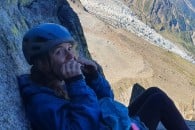

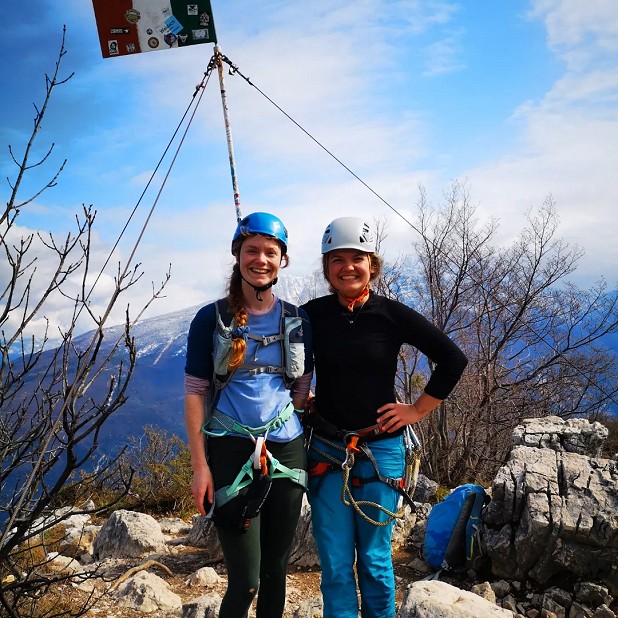
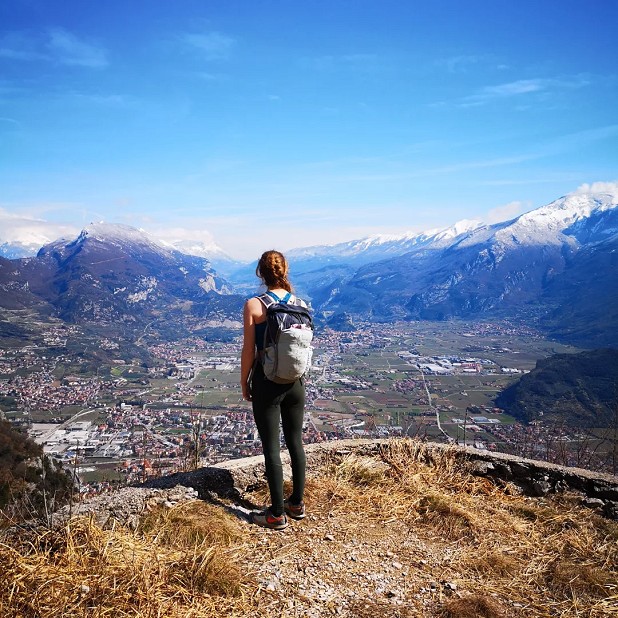
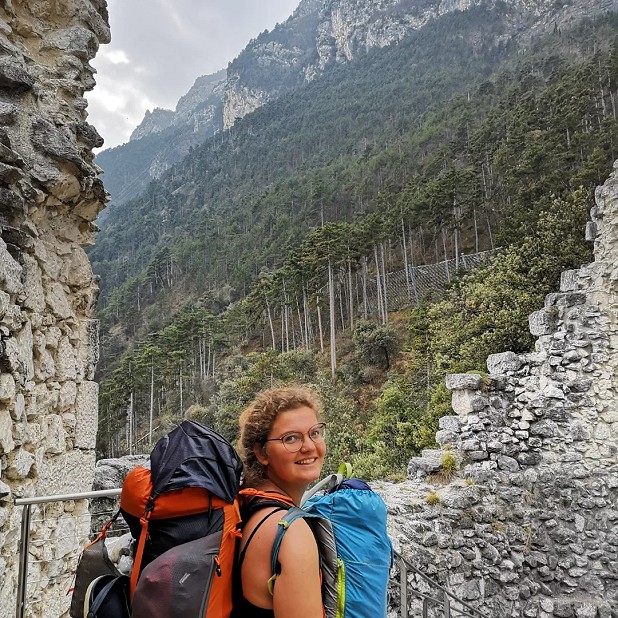
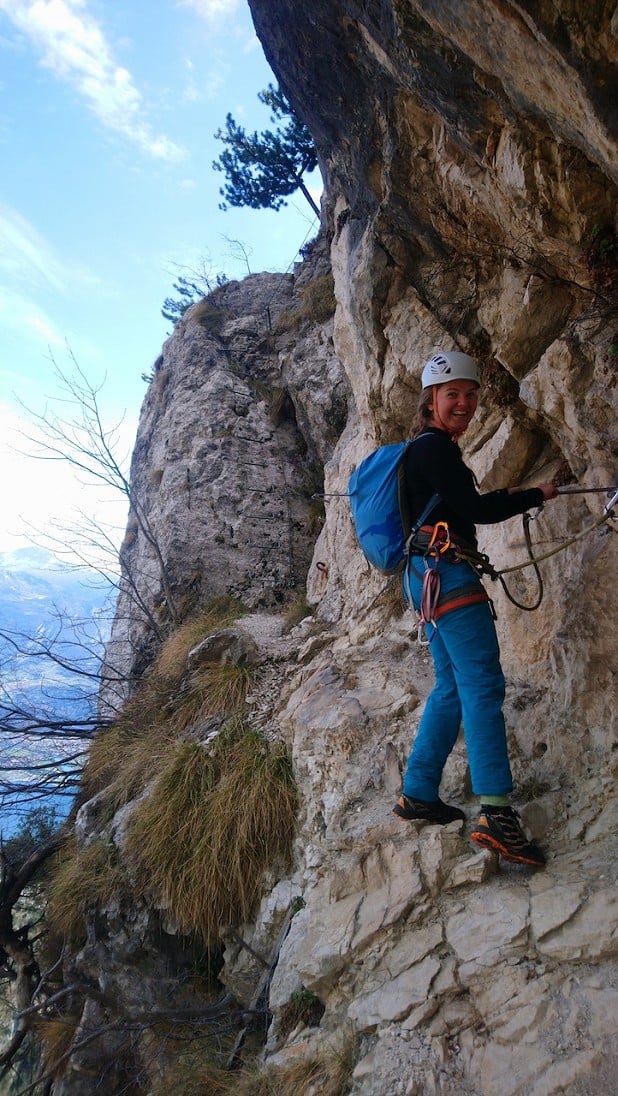

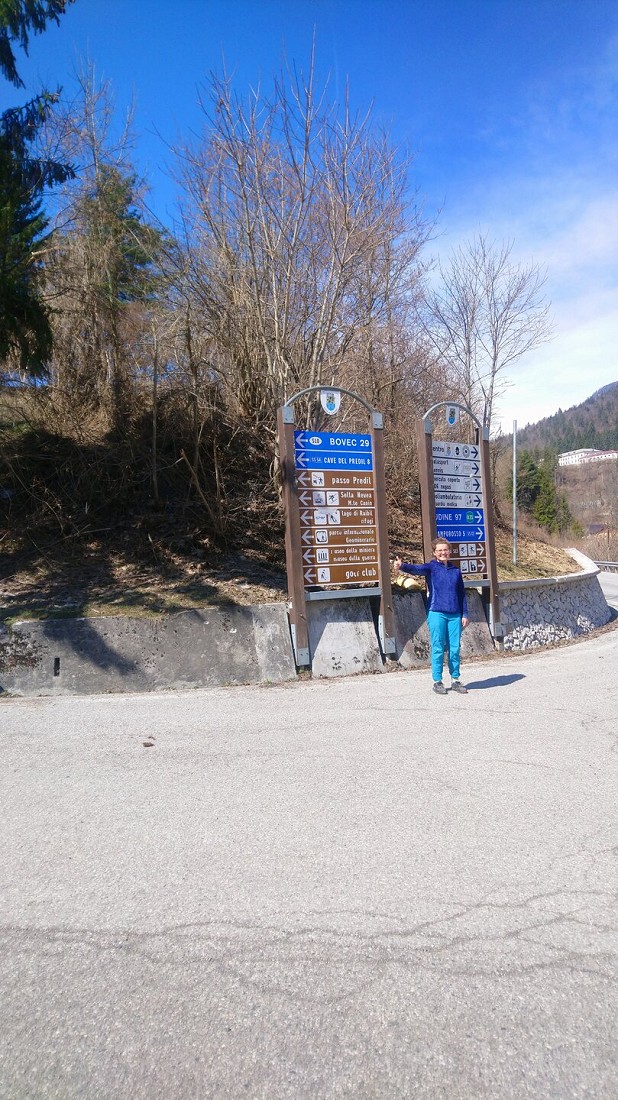
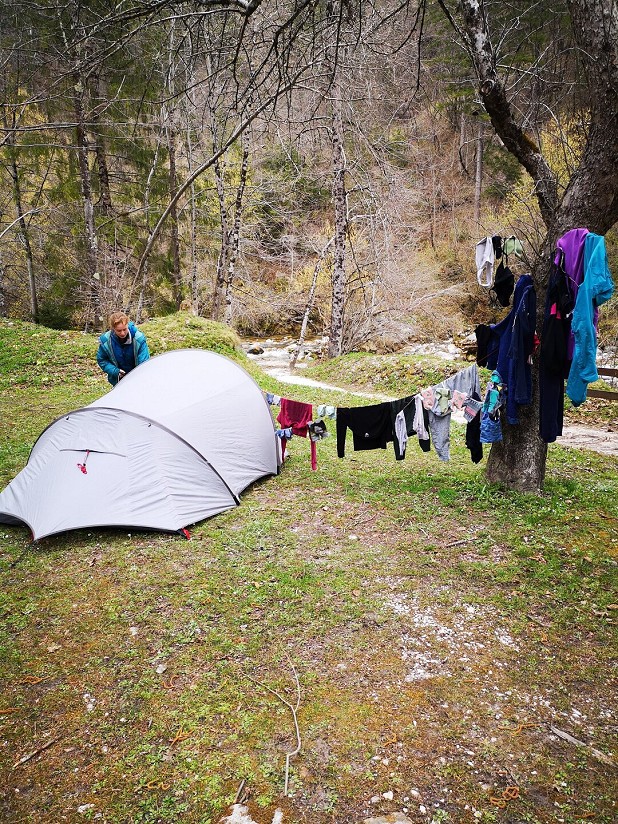
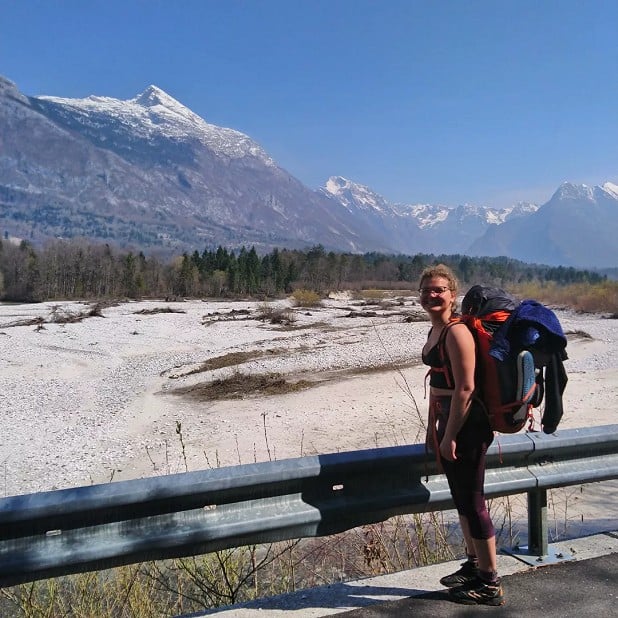
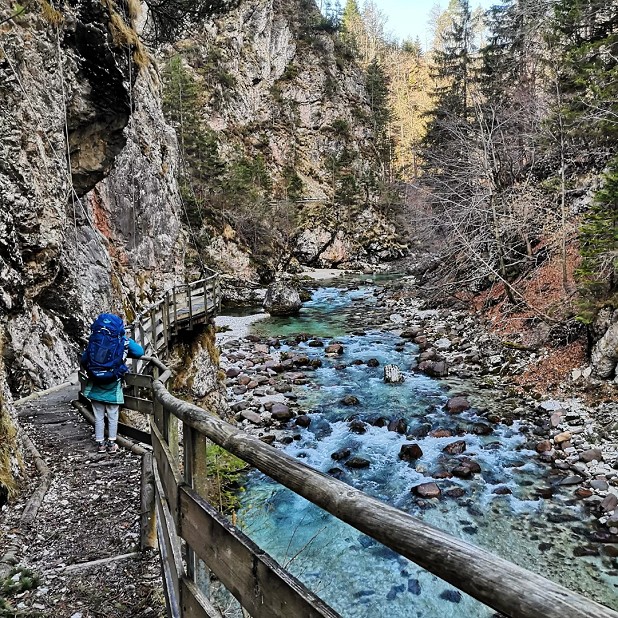
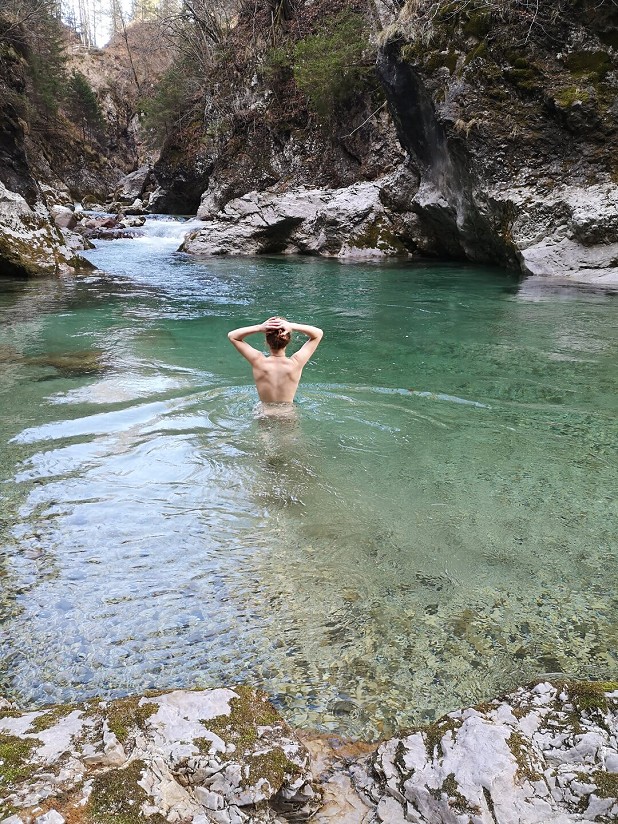
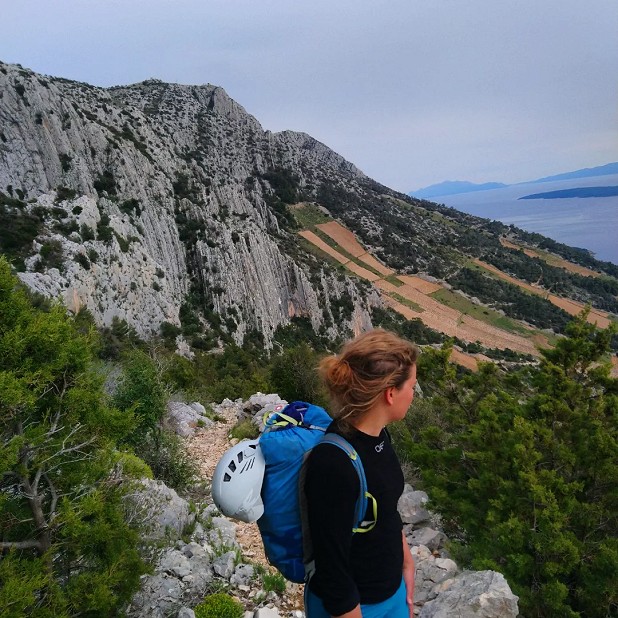
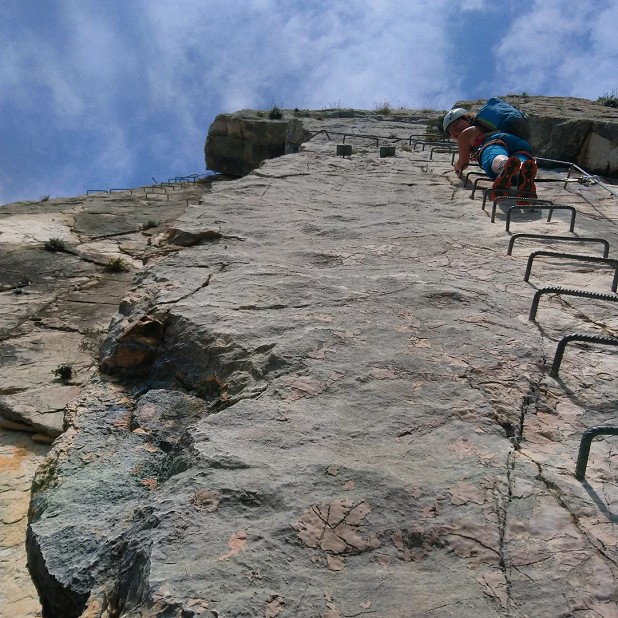


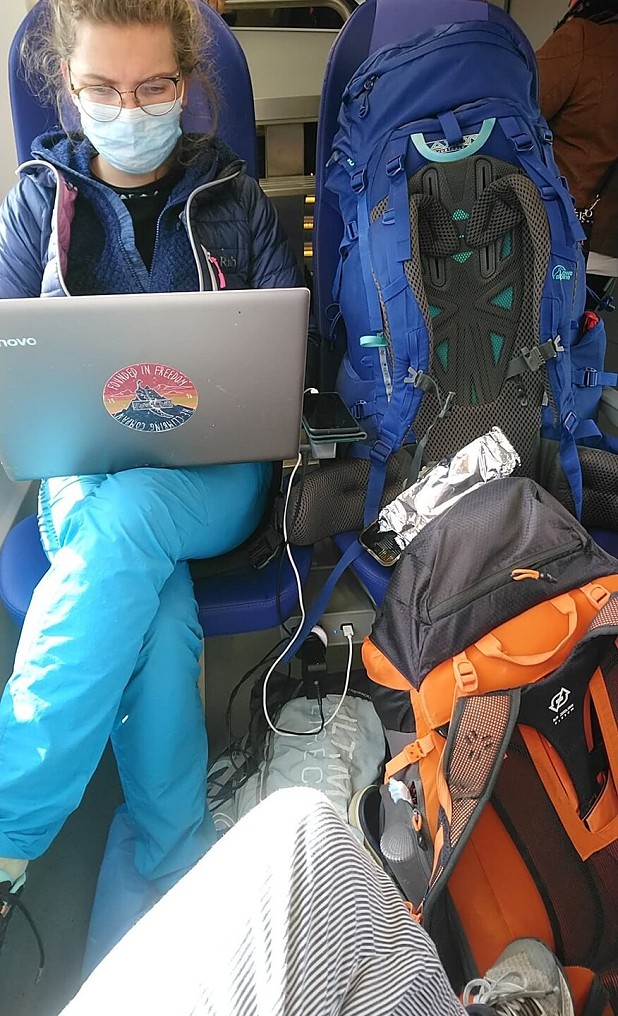
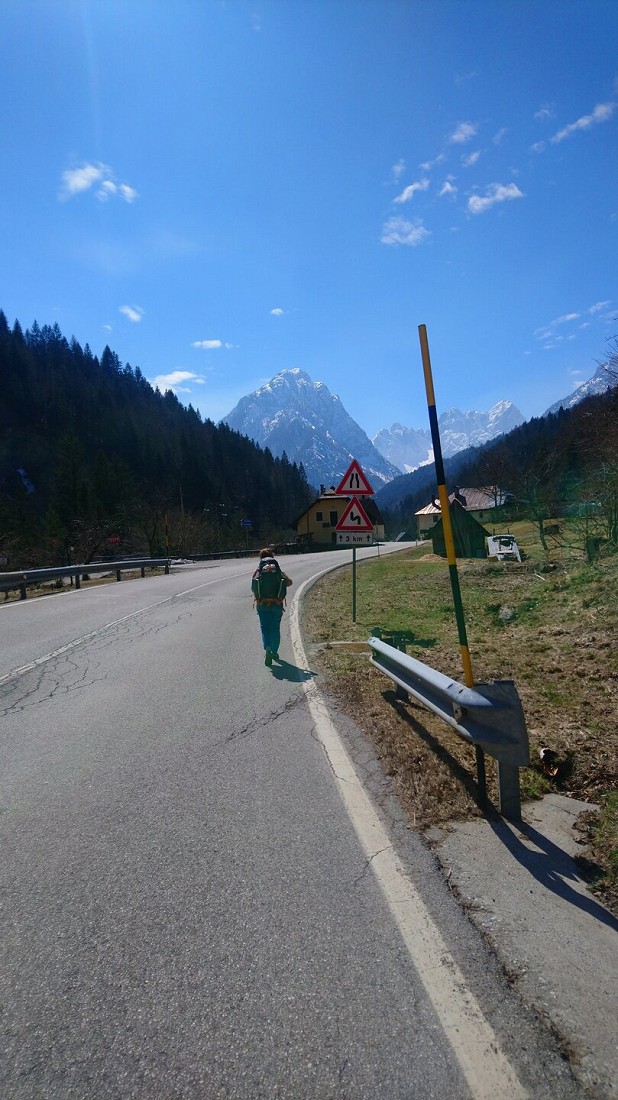

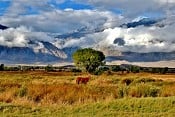

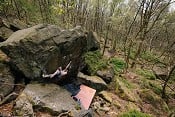
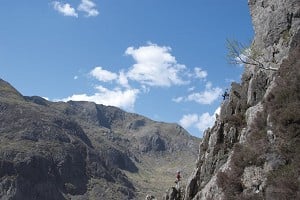




Comments
Great write up and some ideas for our next trip. What I've often found is that strangers will more likely help women than men. I've travelled as a couple before and often present our better half when asking for help. Great read more please.